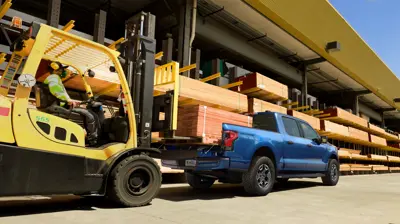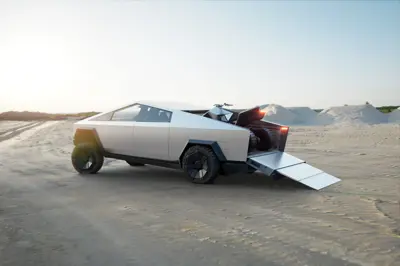Pickup Bed Cargo
EV pickup trucks can help carry bulky, heavy, or irregularly shaped items such as furniture, appliances, tools, building materials, or sports gear.
Last modified: Dec 31, 2024EV pickup trucks offer a versatile solution for transporting various types of cargo. However, they also come with some limitations that owners should be aware of. This article explores the factors affecting the performance and feasibility of using EV pickup truck beds for cargo and provides tips and recommendations for their optimal use.
What Can Be Stored in EV Pickup Truck Beds
The bed of an EV pickup truck is an open space at the rear of the vehicle designed for storing and transporting various items. The size and shape of the bed vary depending on the model and design, but they are generally rectangular and flat, with a tailgate that can be opened or closed. The bed may also feature accessories like tie-downs, hooks, rails, covers, liners, or dividers to help secure and organize items.
The types of items that can be stored in an EV pickup truck bed depend on the bed's dimensions and capacity, as well as the weight and shape of the items. Generally, the bed can accommodate larger and heavier items than the trunk or frunk of the vehicle, such as mattresses, sofas, tables, or cabinets. However, items that are too long, wide, or tall, like ladders, pipes, or kayaks, may not fit. Similarly, while the bed can carry heavier items like generators or lawnmowers, it may not handle extremely heavy items like motorcycles, ATVs, or hot tubs.
The payload and towing capacity of EV pickup trucks also play a crucial role. Payload capacity is the maximum weight the vehicle can carry, including passengers and cargo, while towing capacity is the maximum weight the vehicle can pull, including the trailer and cargo. For example, the Tesla Cybertruck has a payload capacity of 2,500 lbs and a towing capacity of 11,000 lbs, while the Ford F-150 Lightning has a payload capacity of 2,000 lbs and a towing capacity of 10,000 lbs.
The range and efficiency of EV pickup trucks are affected by the weight and drag of the cargo. Adding more weight or drag increases energy consumption and reduces battery efficiency. For instance, the Tesla Cybertruck has a range of 250 to 500 miles, while the Ford F-150 Lightning has a range of 230 to 300 miles.
EV owners should be aware of these limitations and trade-offs when storing and transporting items in their pickup truck beds. It's essential to choose items that fit the size, shape, weight, and capacity of the bed and vehicle. Additionally, owners should monitor the battery level and range before and during trips, accounting for the extra energy consumption and range reduction caused by the cargo. Planning routes and charging stops ahead of time is also advisable.
Benefits of EV Pickup Truck Beds Over Other Storage Options
Despite some drawbacks, EV pickup truck beds offer several advantages over other storage options like trunks, frunks, roof racks, or trailers:
More Space and Flexibility
EV pickup truck beds provide more space and flexibility, accommodating items that are longer, wider, or taller than other storage options. They can also be customized with covers, liners, dividers, or accessories to protect and organize items. Additionally, the beds can serve multiple functions, such as camping, tailgating, or working, by providing a flat and open surface equipped with power outlets, lights, speakers, or tools.
Easier Access and Loading
EV pickup truck beds offer easier access and loading compared to trunks, frunks, roof racks, or trailers. They can be reached and opened from the rear of the vehicle without opening doors, lifting the hood, or climbing the roof. Loading and unloading are also more straightforward and safer, as the tailgate can be lowered or raised without lifting items over the vehicle or trailer. Multiple sides of the bed can be accessed and loaded without moving or adjusting the vehicle or trailer.
Less Impact and Hassle
EV pickup truck beds can reduce the weight and drag of the cargo, lowering energy consumption and range reduction. They also avoid some problems associated with roof racks or trailers, such as damage, theft, noise, or instability of items. Additionally, they eliminate the difficulty, danger, or legality issues related to driving, parking, or maneuvering with a roof rack or trailer.



